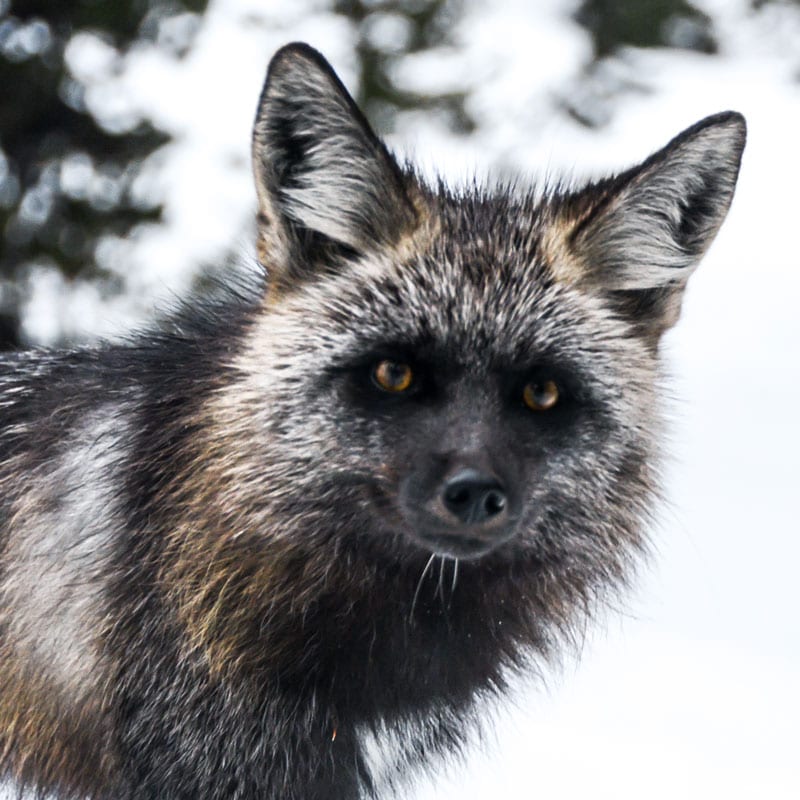A mystery fox with a white-tipped tail in Oregon’s Cascade Mountains was recently identified through luck and scientific sleuthing. Spoiler alert: the “suspect” is the Sierra Nevada red fox (Vulpes vulpes necator) a rare subspecies of the red fox (Vulpes vulpes).
Before 2012, sightings of this secretive fox outside of its home range in the Sierra Nevada were few or attributed to another subspecies, the Cascade red fox (V. v. cascadensis). Nevertheless, the fox had been spotted roaming in and around the Three Sisters Wilderness more and more frequently.
To determine the identity, Oregon Department of Fish and Wildlife and partners conducted a research project from 2012 to 2014 utilizing baited camera stations equipped with trail cameras and hair snagging devices. University of California at Davis conducted DNA analysis on the collected hair samples, and the wily fox’s identity was confirmed.
To gain additional information, ODFW live trapped foxes in 2017 and affixed GPS collars to them. “We trapped a total of seventeen unique individual foxes,” said Jamie Bowles, ODFW assistant wildlife biologist. “The goals of our study were to assess the fox’s home range, habitat use and den site requirements.” Along with the GPS data, Bowles and volunteers spent many hours on the ground tracking and observing collared foxes.
Some results? These montane foxes range at elevations from 4,900 to 6,500 feet in mountain hemlock and white bark pine habitats in the Cascades. Their fur-lined feet act like snowshoes enabling the animals to easily move across the snow. Adults usually weigh from eight to ten pounds, and their pelage, or fur, color phases are red, silver, black or “cross” (silver with black across the shoulders and down the back). Prey includes rodents, birds, ground squirrels, snowshoe hares, pika and pine martens.
“We discovered that the foxes have large home ranges for their size, about sixty square miles,” Bowles said. In addition to the forested habitats, the foxes also inhabit high elevation lava flows for hunting prey and denning. Some dens are close to areas of high human use such as Mt. Bachelor parking lots or area sno-parks, which is a concern.
“The number one mortality that I could determine for the foxes during this study was vehicle strikes,” Bowles said. Also, numerous observations indicate the foxes are using ski and snowmobile trails to access warming shelters, perhaps scavenging for food scraps.
If you spot a fox while you’re out recreating, count yourself supremely lucky, but return the favor to nature by not disturbing the foxes or their den, and picking up after yourself and keeping a clean camp when you are out in nature. Welcome the new fox to our region by protecting the “wild” in wildlife.





